Part of the beautiful side of visiting India is seeing its remarkable history in the form of monuments, temples, mosques, forts and other landmarks and the stories behind them. Of course there’s the Taj Mahal (oh hey, next blog post), but there are so many beautiful and breathtaking places that are overshadowed by the Taj. At each spot we had a guide to share the history. Knowing what I know of India now, I wouldn’t be surprised if the history we got were more tall tales than they were accurate accounts, but they’re definitely part of the experience.
This post is a more practical one. I would love to either wow you with photos of the non-Taj places or to help you plan your own trip to India one day. Our itinerary was a fairly common one covering the Golden Triangle that links Delhi, Agra and Jaipur followed by a quick flight to Mumbai for the wedding festivities. Descriptions and a few select photos first. If you’re not interested in those, skip on down to the bottom for the complete photo gallery.
New and Old Delhi
Delhi was difficult because it was my introduction to India, and therefore I spent my time there adjusting to culture shock and overcoming being awake for 40 hours straight (not to mention crossing 10 time zones). It’s crowded, it’s confusing and it’s crazy polluted. It’s still worth visiting for a day or two for a few choice spots, including the large complex of government buildings near India Gate.
- Jama Masjid, pictured above, is the largest mosque in India. It requires a trip through Old Delhi, which makes it worth it alone, but the scope of it in person is breathtaking. You have to take off your shoes* to enter the courtyard area, and if you’re a woman you’re given something that resembles a hospital gown for extra cover, but it’s a small effort to see something so grand.
- India Gate is the national monument of India and was built to honor those who died in WWI and the Afghan Wars. It was the site of the recent demonstrations to protest poor reactions to the horrific rape that happened in New Delhi. (Not included in my gallery below, see picture in previous post).
- Raj Ghat is a park memorializing Mahatma Gandhi. The park specifically marks where Gandhi was cremated after his assassination, and at the very spot is an eternal flame. While we were there, there was a group of men sitting in prayer and chanting at the flame.
- Lotus Temple is a Bahá’í House of Worship. The Bahá’í Faith allows opens its worshiping spaces to all, regardless of religion or distinction, and welcomes them to worship God in their own way.
Agra
Agra is home of the Taj Mahal, and we saw nothing else inside the city while we were there. Agra is smaller and poorer by Delhi standards, but the drives through its streets rival some of the more ridiculous roller coasters I’ve ridden. Outside of Agra was one of my favorite places in all of India, Fatehpur Sikri. Essentially a small city and briefly the capital of the Mughal empire in the late 16th century, Fatehpur Sikri is some of the best preserved examples of Mughal architecture and a World Heritage site. The Mughal emperor Akbar commissioned the city, and Akbar is one of my favorite Mughal characters. Though I don’t condone polygamous relationships, I am still amused by Akbar’s keeping of a harem of mistresses and his love of games (we were told Hide and Seek and something that resembled parcheesi — but I say take that with a grain of salt). We had a great time running around like idiots through the open courtyards. There’s also another Jama Masjid and the tomb of Salim Chishti. Salim Chisti was a favorite spiritual figure of Akbar’s, because he believed the saint was responsible for granting him a male heir. Women (example: Carla Bruni) continue to visit the tomb today in hopes they too will be granted a child.
Jaipur
Jaipur was my favorite of the three Golden Triangle cities. It’s somewhat known for its textiles and crafts, which make it a great shopping spot, but it has this charming vibe that was missing from Delhi and Agra. It didn’t hurt that we had our first solid dose of sun since arriving and the temperatures were hovering right around perfection.** It’s called the Pink City because the buildings in the central city were painted pink to honor Prince Edward’s visit in 1876.
- Jantar Mantar is a collection of massive outdoor astronomy instruments and another World Heritage site. The one pictured above is the world’s largest sundial, accurate to the second. There are instruments for tracking the heavenly bodies, including each constellation of the zodiac.
- Amer Fort was the capital for the Rajput clan and built by the commander of Akbar’s army. You can ride elephants to get from the parking lot up to the fort high on its hill. Spoiler alert: riding an elephant is not as cool as it sounds, but you have do it for the photo alone. The fort is a maze of beautiful structures, including one structure that’s covered with mirrors. And unlike historical spots in America where you’re prohibited from doing and touching all the things, you’re pretty much given free reign to run around and climb whatever you please in India. Amer Fort makes for great views of surrounding vistas during some mean games of hide and seek. With monkeys. Spoiler alert: Monkeys are mean.
Mumbai, aka Bombay
Mumbai is my favorite. It’s this nifty mix of traditional India, Britain colonialism and a cosmopolitan big city. It’s a pain in the ass to navigate because of crippling traffic that is unlike any other traffic in the country. It has beaches and a tropical disposition. We spent much of our time participating in the three days of wedding festivities and recovering from the wedding festivities, but we managed to squeeze in a day tour of the city and a day trip away from the city.
- Churchgate Terminus or Victoria Terminus. You’ve probably heard about how crazy the Indian train systems are, but you really have to ride or at least see it to understand. Enter the Churchgate and Victoria stations for free and just watch a train arrival. Indian math = there’s always room for one more. Victoria Terminus is the more beautiful one, Churchgate is probably the more accessible one. And if you’ve seen Slumdog Millionaire, you might already be familiar with Churchgate.
- Gateway of India/Taj Mahal Palace Hotel is probably the most touristy spot in Mumbai. The Gateway of India is a monument built by the British, for the British, but it’s still a popular spot for Indians to visit — Indians love to take photos with Westerners, and we had our pictures made at least a dozen times here. The Taj is a beautiful, British colonial-style building and the chic place to stay in Mumbai. It was one of the sites of the 2008 terrorist attacks, and there is a heavy security presence around it. It houses the lone Starbucks we saw during our trip.
- Marine Drive is where you can really appreciate the coastal ambiance of Mumbai. It’s known as the Queen’s Necklace because of how the streetlights along the road appear as a strand of pearls when lit. There is some expensive real estate along this drive.
- Mumbai rush hour — this is kind of unfair because you’re going to be forced to live it if you visit Mumbai. It’s fascinating to witness in that it will change your perspective of bad traffic, no matter where you live; just make sure someone else is driving. It took us two hours to get 12km after our day tour. Yes, you can walk faster than that, but you probably wouldn’t choose to walk it.
- Elephanta Island and Caves require a ferry trip, which is an experience in and of itself (especially getting on and off the boat). The caves are a World Heritage site which feature elaborate carvings of structures and images of Hindu gods. They’re perched high upon some hills and provide a great view of the entire island and the waters and lands nearby. The half-day trip is a nice getaway from the city, though just as crazy as any experience in India. And the monkeys, oh lord, the monkeys.
Click photos to embiggen and see captions
There are so many more places we didn’t get a chance to fully explore or visit that are worth seeing. One of the unfortunate things about visiting India is that you have to pick and choose — there is no way to do and see it all unless you choose to make a long-term visit.
*While in India, you get used to a lower threshold of cleanliness. You get used to taking off your shoes, eating off dirty dishes, etc. It’s not an option, you just get used to it.
**The notion that India is extremely hot all of the time is a false one. It is extremely hot all of the time during the summer. In the winter, its prevailing characteristic is fog, and that fog is omnipresent — the fog and the pollution are the reason for the haziness in most of my photos. While we were in the north, I needed at least a light cardigan every day and several mornings required my fleece jacket. The fog burned off and the temperatures warmed up a bit in Mumbai, though it was never hotter than an early summer day in the South.
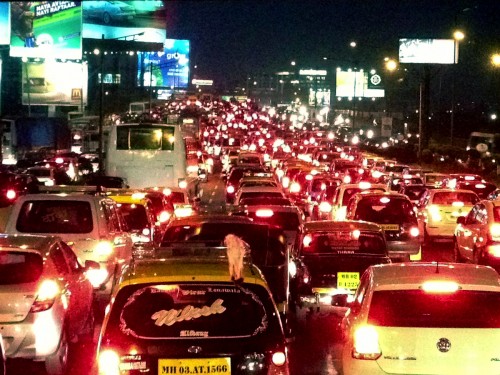
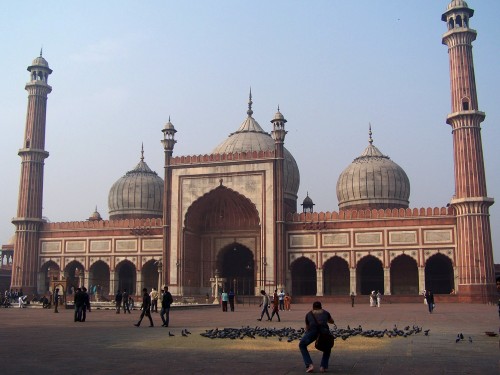

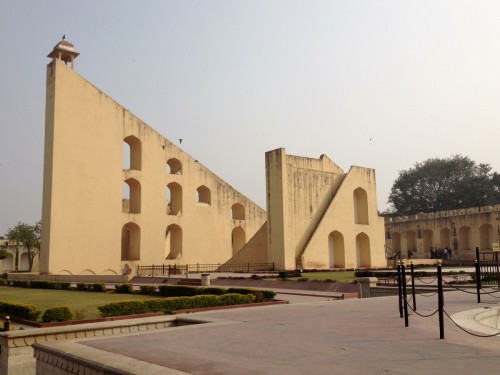
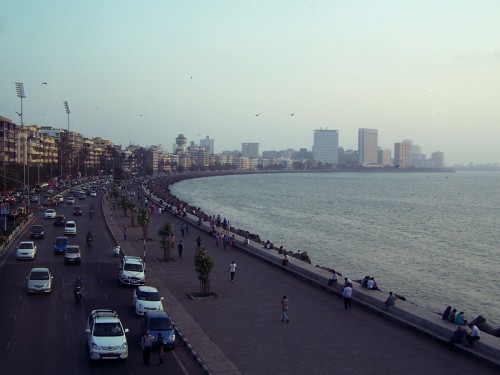

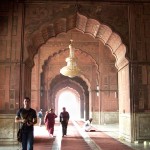
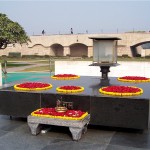

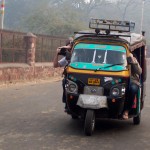
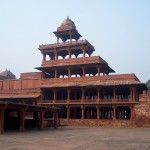
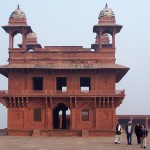
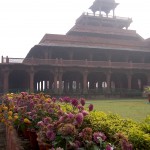
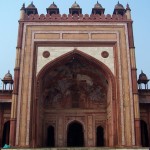
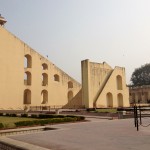
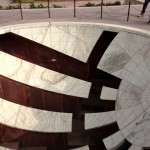
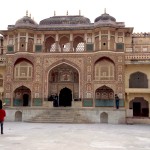
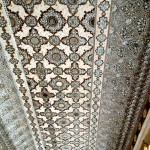
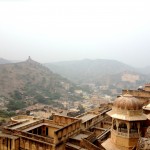
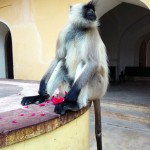
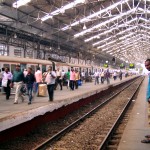
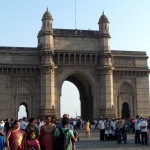

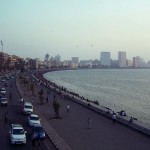
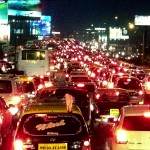
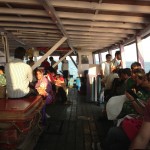
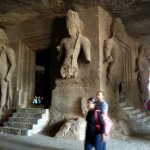

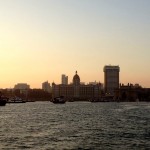
Oooh I so wanted to go to Jaipur when there, and then SAS wound up asking us to lead the Ranthambore trip instead (worth it). Next time…
What an amazing trip! I still can’t get over that picture of all the traffic that you posted. INSANE.